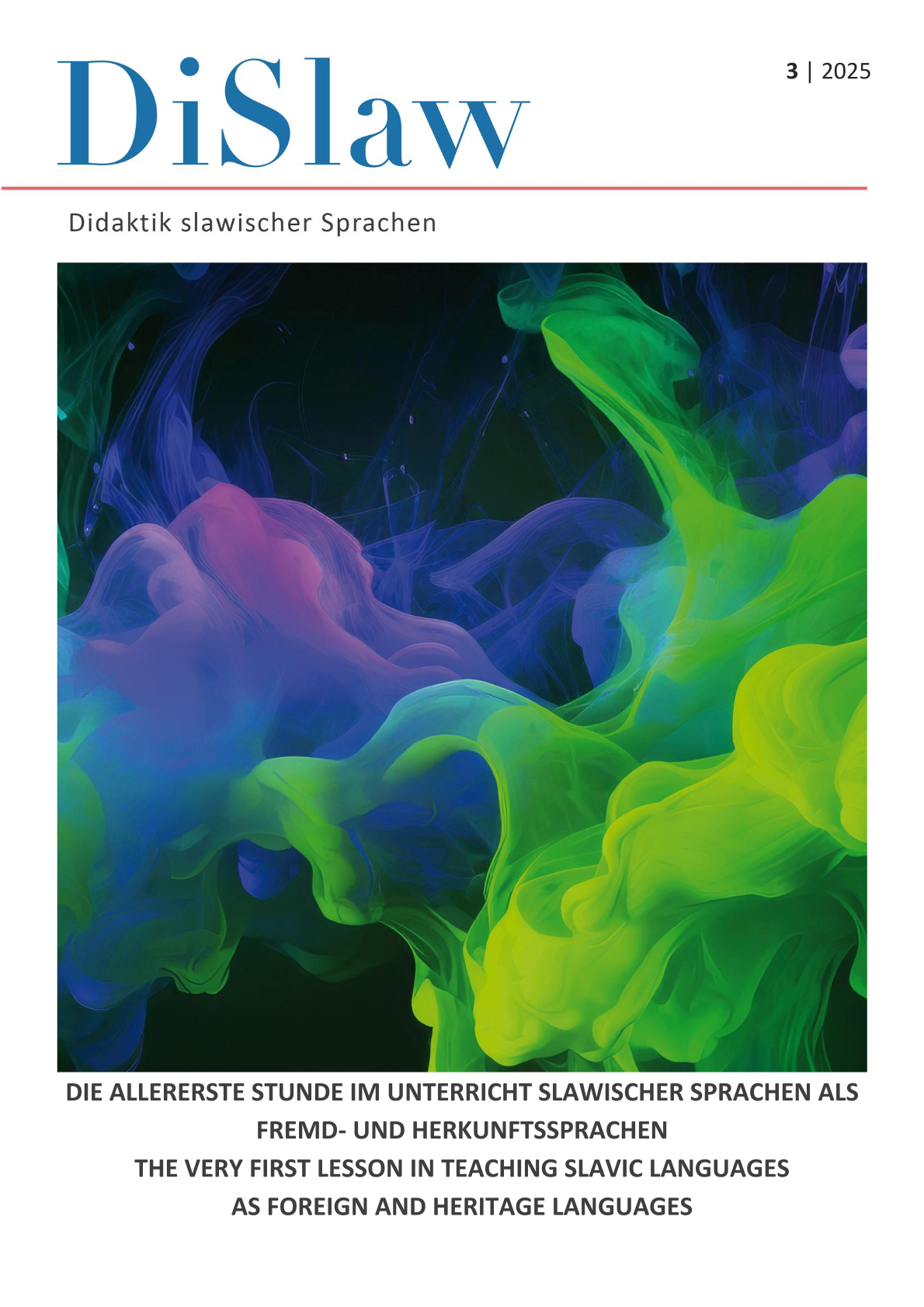
About the Journal
Didaktik Slawischer Sprachen (Didactics of Slavic Languages) (DiSlaw) is an Open Access journal that is published twice a year and follows a strict double-blind peer review process. DiSlaw is indexed by the DOAJ (Directory of Open Access Journals) and listed in the Fachportal Pädagogik (Education Research Portal) and Ulrichsweb.
DiSlaw meets the urgent need for a subject-specific journal focused on the teaching and learning of Slavic foreign and heritage languages in German-speaking regions. It combines theoretical foundations with practical approaches to address the challenges of guided language acquisition.
We – the editorial team – do not see subject didactics as a mere collection of best practice examples but rather as a research-driven, theory-based, and practice-oriented discipline. Therefore, DiSlaw provides a publication platform for various types of contributions that engage with the teaching and learning of Slavic languages. In addition to scientific-theoretical articles and theory-guided studies from teaching practice, DiSlaw also publishes practical teaching examples and book reviews (e.g., of textbooks).
DiSlaw presents itself as a multilingual journal, publishing articles in German and English as well as in Bosnian, Croatian, Russian, Serbian, Slovenian, and Ukrainian. The journal is also open to contributions in other Slavic languages.
Current Issue

The very first lesson in language teaching has long been regarded as a particularly significant moment. It is far more than a mere organisational starting point: it is a moment in which expectations are met or disappointed, learning dispositions begin to develop, and the foundations for motivation and rapport are laid. Especially in the teaching of Slavic languages – whether as foreign or heritage languages – this first lesson can be of special importance. For foreign language learners, it opens the door to a new and often unfamiliar linguistic and cultural world; for many heritage speakers, it marks the beginning of a conscious engagement with the standard language of their family background. Thus, the first lesson is not only a pedagogical starting point but also a symbolic act of encounter, recognition, or re-orientation.

